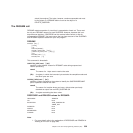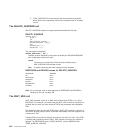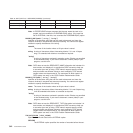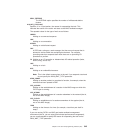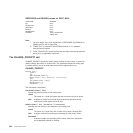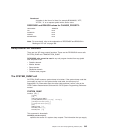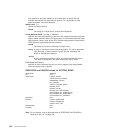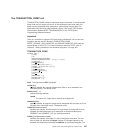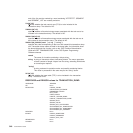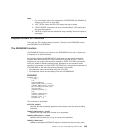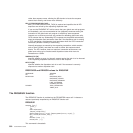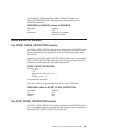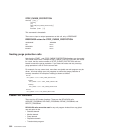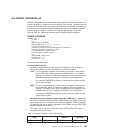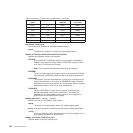
The TRANSACTION_DUMP call
TRANSACTION_DUMP causes a transaction dump to be taken. If the transaction
dump code that you supply on input is in the transaction dump code table, the
dump may be suppressed and, optionally, a system dump may be taken. For
information about the dump table and how it works, refer to the CICS Problem
Determination Guide and SET TRANDUMPCODE, in the CICS System
Programming Reference manual.
Important
There is a restriction in using the XPI early during initialization. Do not start exit
programs that use the XPI functions TRANSACTION_DUMP,
WRITE_JOURNAL_DATA, MONITOR, and INQUIRE_MONITOR_DATA until the
second phase of the PLTPI. For further information about the PLTPI, refer to
Chapter 4, “Writing initialization and shutdown programs,” on page 425.
TRANSACTION_DUMP
DFHDUDUX [CALL,]
[CLEAR,]
[IN,
FUNCTION(TRANSACTION_DUMP),
TRANSACTION_DUMPCODE(name4 | string | ’string’)
[CSA(NO|YES),]
[PROGRAM(NO|YES),]
[SEGMENT(block-descriptor),]
[SEGMENT_LIST(block-descriptor),]
[TCA(NO|YES),]
[TERMINAL(NO|YES),]
[TRANSACTION(NO|YES),]
[TRT(NO|YES),]]
[OUT,
DUMPID(name9 | *),
RESPONSE(name1 | *),
REASON(name1 | *)]
Note: This command is NOT threadsafe.
CSA(NO|YES)
specifies whether the common system area (CSA) is to be included in the
transaction dump. The default is NO.
DUMPID(name9 | *)
returns the dump identifier.
name9
The name of a 9-byte field to receive the assigned ID.
PROGRAM(NO|YES)
specifies whether all program storage areas associated with this task are to be
included in the transaction dump. The default is NO.
SEGMENT(block-descriptor)
specifies the address and the length of a single block of storage that is to be
dumped. See block-descriptor for a description of valid block-descriptors.
SEGMENT and SEGMENT_LIST are mutually exclusive.
SEGMENT_LIST(block-descriptor)
specifies the address and length of a set of contiguous word pairs. The first
word in each pair specifies the length in bytes of a storage segment to be
dumped; the second word contains the address of the storage segment. The
Chapter 3. The user exit programming interface (XPI) 347



